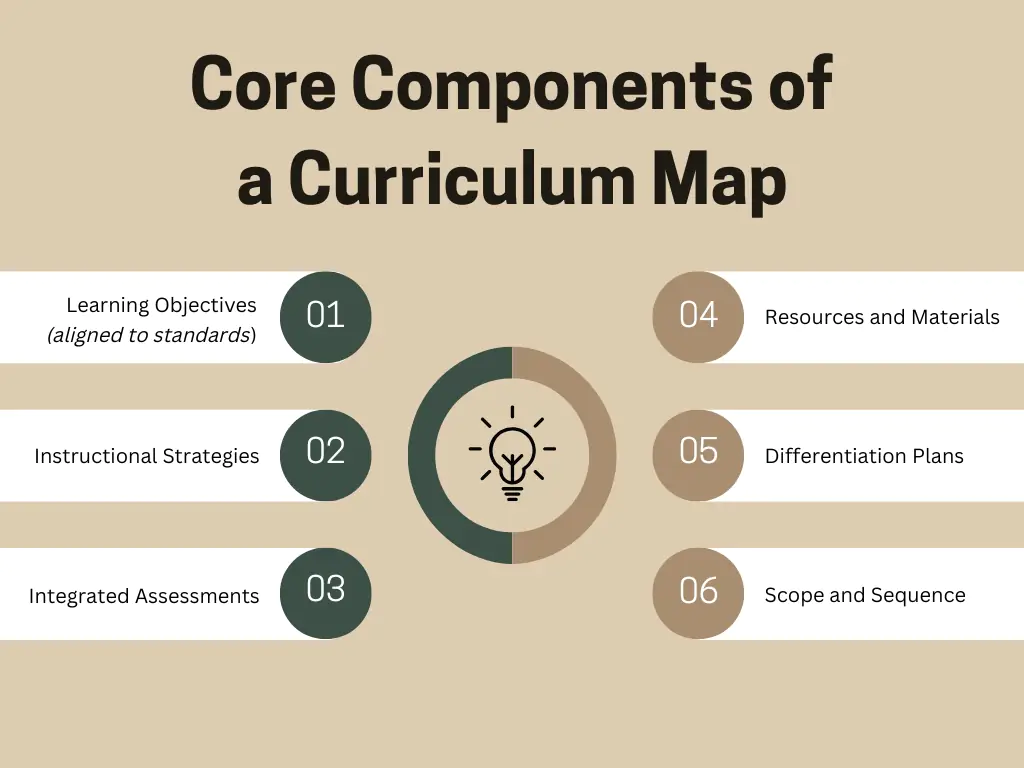Schedule a free demo to learn more
How are Teachers using Curriculum Mapping to Design More Effective Lessons?
3rd May 2025
If you’re an educator today, you’re juggling more than just lesson plans. You’re balancing diverse learning needs, rapidly evolving state standards, tech integration and parent expectations. And all of this all while ensuring every student in your class meets benchmarks. Does this sound familiar?
This isn’t just a teacher’s dilemma, it’s a system-wide challenge. But amidst the chaos, one strategy is quietly transforming how educators teach and how students learn—Curriculum Mapping. What was once reserved for administrative audits or end-of-the-year reviews, is now being embraced by teachers as a daily essential tool for planning lessons that are targeted, effective and equitable.
In this blog, we’ll explore what Curriculum Mapping looks like in the classroom, how it elevates lesson planning and why it’s becoming a cornerstone of modern day Curriculum Management.
The Growing Instructional Demands on Teachers
In the U.S. alone, 73% of teachers say they don’t have enough time to plan high-quality lessons due to increasing workload demands (RAND Corporation, 2023).
At the same time, classrooms are becoming more diverse- linguistically, culturally and academically. This is compelling educators to tailor their instruction more than ever. Yet most schools continue to rely on outdated curriculum templates, disconnected systems or over-reliance on textbooks. These limitations leave teachers feeling reactive, not strategic, and the stakes are high.
In fact, according to a McKinsey report, students who fall behind even one academic year may take up to three years to catch up without targeted interventions. That’s why the ability to proactively design lessons, instead of just delivering them, is a priority, and this is where Curriculum Mapping changes the game.
What Curriculum Mapping Really Means for Effective Teaching
Picture curriculum mapping as the Google Maps for teaching. It’s more than just a static document. It’s a dynamic, visual representation of what’s being taught, how, when and why. It ensures alignment with standards, assessments and desired student outcomes, guiding educators on the most effective path forward.
At the classroom level, it answers critical questions like:
- Are we teaching to the standards or just to the textbook?
- Are we scaffolding learning over time?
- Are we identifying gaps and overlaps in instruction across grades or subjects?
Here are the core components of a Curriculum Map:
- Learning objectives (aligned to standards)
- Instructional strategies
- Assessments
- Resources and materials
- Differentiation plans
- Scope and sequence
And unlike static binders or shared Google Docs, modern curriculum mapping tools allow for collaborative, real-time editing, cross-grade insights and alignment with state and district mandates.

What does Curriculum Mapping look like at the Classroom Level?
Before we dive into the broader impact, it’s important to understand how curriculum mapping comes alive in day-to-day teaching. This isn’t just a strategic tool sitting on an administrator’s dashboard. It’s a living, breathing part of how teachers plan lessons, respond to student needs and align instruction with standards.
When done right, curriculum mapping becomes the invisible architecture that supports every classroom decision, from choosing a text to sequencing a unit.
1. Unit Planning with clarity and consistency
Instead of starting every unit from scratch, teachers refer to a mapped curriculum that outlines:
- Grade-level expectations
- Prior knowledge from earlier units
- Interdisciplinary connections
This lets them build on previous learning, avoid redundancy and maintain pacing. Teachers can also co-plan with colleagues across subjects for integrated units (e.g., linking a 5th-grade science unit on ecosystems with an English unit on environmental fiction).
Research Shows: Schools that use collaborative curriculum mapping report a 35% increase in cross-grade instructional coherence (EdWeek Research Center, 2023).
2. Daily Lesson Planning with purpose
With curriculum maps, teachers don’t just pick activities. They align every lesson to a larger goal. For example, instead of just teaching a persuasive writing lesson in isolation, the teacher sees how it connects to:
- State literacy standards
- Upcoming assessments
- A larger project (e.g., writing a letter to a local official)
This macro-to-micro view empowers teachers to prioritize time, differentiate early, and pre-empt misconceptions.
How Curriculum Mapping improves Lesson Planning and differentiation?
One of the most powerful impacts of curriculum mapping? It gives teachers visibility into student pathways and the ability to design interventions that actually work. Here’s how:
1. Better differentiation with data
With curriculum maps aligned to assessments, teachers can spot where students tend to struggle (e.g., fractions in 4th grade) and plan targeted supports ahead of time. They can group students based on readiness, modify tasks, or integrate scaffolds. More importantly, they’re not guessing, they’re planning with intent.
According to the Data Quality Campaign, 82% of teachers say having access to aligned curriculum data improves their ability to differentiate instruction.
2. Streamlining Instructional Gaps
Many districts struggle with instructional gaps between grades. A mapped curriculum solves this by :
Highlighting skills that are under-taught
Identifying units with misaligned standards
Ensuring vertical alignment from K-12
This helps in smoother transitions and reduces re-teaching time in subsequent grades.
3. Designing for Equity and Inclusion
Curriculum maps also help surface representation gaps like identifying a lack of culturally responsive texts or diverse historical perspectives. With this insight, teachers can enrich units, bring in varied voices and create inclusive learning experiences that resonate with every student.
The Role of Technology in Modern Curriculum Mapping
A modern curriculum management platform like Edusfere has transformed mapping from a manual task to a strategic advantage.
Here are the key benefits of using Edusfere for your curriculum management goals:
- Real-time updates across teams
- Alignment to national/state standards
- Searchable and filterable maps
- Built-in collaboration and feedback features
This kind of visibility breaks silos between departments, supports instructional coaching and ensures that everyone- from the principal to the paraprofessional, is working from the same playbook.
Research Shows: Schools using tech-driven curriculum mapping platforms report up to 40% more time saved in unit planning and 27% increase in standards coverage accuracy. (EdTech Digest, 2023)
How one Middle School transformed planning
At a public middle school in North Carolina, teachers struggled with inconsistent pacing and student achievement gaps in math. Here’s how things improved after implementing a tech-enabled curriculum mapping solution:
- Teachers collaborated to map math units for grades 6 to 8.
- Weekly planning meetings used maps to guide differentiation.
- Data from assessments were fed back into the maps to update strategies.
The above factors had a remarkable impact on both students and teachers. Here’s what happened:
- Math scores rose by 17%;
- Teachers reported a 42% increase in lesson planning efficiency;
- Students who risked falling behind, received tailored support three weeks earlier than in the previous years.
Mapping with Data: Teaching with Precision
Curriculum mapping is no longer a luxury. It’s indispensable in modern day education.
In a world where teachers are asked to do more with less, curriculum mapping puts them back in control. It connects instruction to purpose, planning to progress and strategy to student success. Whether you’re a classroom teacher, school leader or edtech provider, the message is clear: When we map with intent, we teach with impact.
Precision Teaching starts with Edusfere
At Edusfere, we help schools and educators and content providers turn curriculum chaos into clarity. Our platform is built for modern curriculum management, empowering you to:
- Align your curriculum to standards
- Design personalized, data-driven lessons
- Collaborate across teams with ease
Book a demo session to see how Edusfere can simplify curriculum mapping for you and your team.
